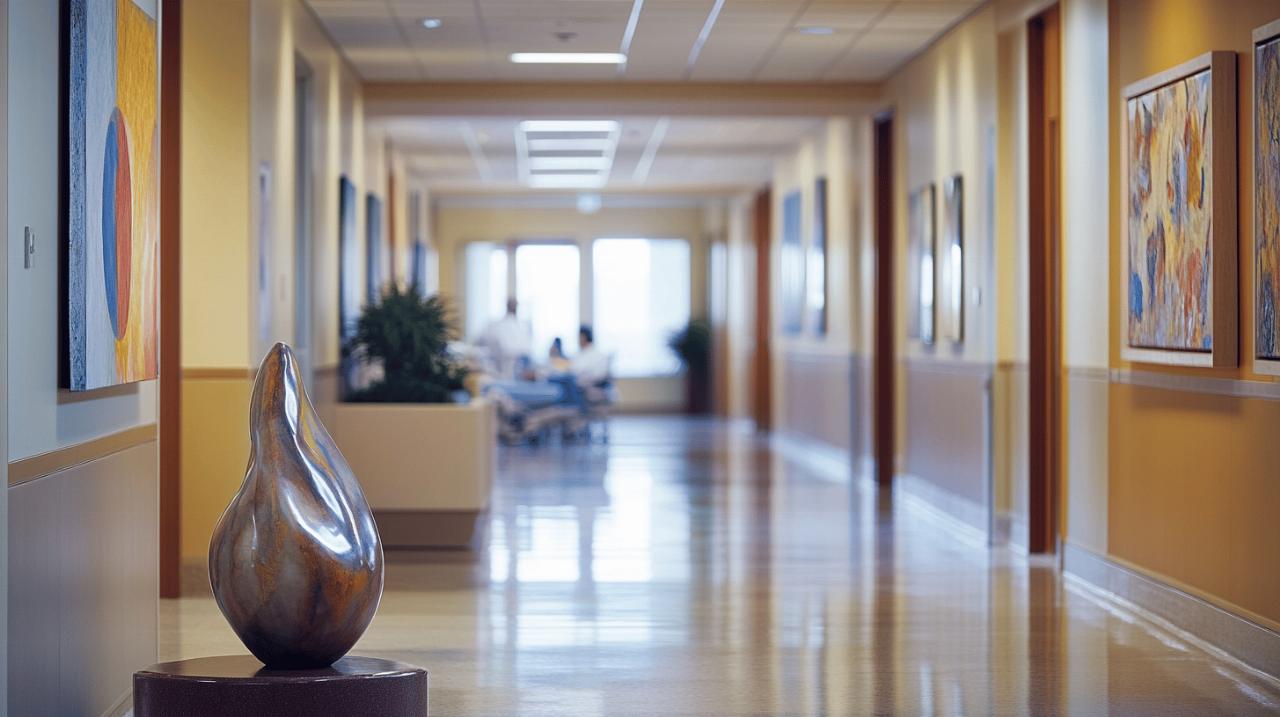The concept of incorporating art into healthcare environments has gained significant recognition for its potential to transform patient experiences. Hospitals, once sterile and clinical spaces, are increasingly recognizing the value that visual arts bring to healing environments. This shift represents a holistic approach to healthcare that addresses not just physical healing but emotional and psychological wellbeing too.
The Healing Power of Visual Art in Healthcare Settings
Visual art in hospitals serves as more than mere decoration; it functions as an integral component of the healing process. Research highlighted by Asgoponlus and other organizations demonstrates that thoughtfully selected artwork can significantly impact recovery rates and mental health outcomes. When patients are surrounded by engaging visual stimuli, their perception of time changes, making hospital stays feel less prolonged and reducing anxiety levels. The physical environment plays a crucial role in how patients experience their healthcare journey, with art creating a bridge between clinical necessity and human comfort.
How artwork influences recovery rates and mental health
Studies have shown that exposure to visual art can measurably reduce stress levels in patients. According to research referenced in the British Medical Journal, viewing artwork triggers positive physiological responses, including lowered blood pressure and decreased cortisol levels. This biological impact translates into tangible benefits for patients, potentially reducing pain medication requirements and shortening hospital stays. Art creates moments of distraction from illness and discomfort, offering patients brief mental escapes from their clinical surroundings. The psychological respite provided can be particularly valuable in long-term care situations where environmental monotony becomes a challenge to mental wellbeing.
Case studies of successful art integration in UK hospitals
The National Arts in Hospital Network serves as a cornerstone for art integration in UK healthcare settings, with over 100 NHS trusts participating in their initiatives. During the height of the pandemic, NAHN distributed more than 10,000 copies of creative activities called 'Boredom Busters' to patients unable to receive visitors. In another notable example, Damien Hirst donated over 50 rainbow artworks to the NHS in 2020, which were distributed across various facilities by NAHN. The 'Our National Health Stories' project engaged thousands of NHS staff across 19 member trusts, exploring the role of healthcare through artistic expression, culminating in a live performance at Aviva Studios in Manchester. These initiatives demonstrate how art can function as a community-building tool within healthcare environments, connecting patients with the broader world beyond hospital walls.
Creating therapeutic hospital environments through art
 Transforming clinical spaces into healing environments requires thoughtful consideration of how art is integrated into the healthcare setting. Paintings in Hospitals, founded in 1959 by Sheridan Russell, has been pioneering this approach for decades. Their collection of over 3,000 artworks by more than 1,000 artists has helped countless healthcare facilities create more welcoming environments. Similarly, CW+, the official charity of Chelsea and Westminster Hospital NHS Foundation Trust, has amassed a collection of approximately 2,000 artworks displayed throughout their facilities. The impending merger between these two organizations promises to strengthen their combined impact on healthcare environments across the UK.
Transforming clinical spaces into healing environments requires thoughtful consideration of how art is integrated into the healthcare setting. Paintings in Hospitals, founded in 1959 by Sheridan Russell, has been pioneering this approach for decades. Their collection of over 3,000 artworks by more than 1,000 artists has helped countless healthcare facilities create more welcoming environments. Similarly, CW+, the official charity of Chelsea and Westminster Hospital NHS Foundation Trust, has amassed a collection of approximately 2,000 artworks displayed throughout their facilities. The impending merger between these two organizations promises to strengthen their combined impact on healthcare environments across the UK.
Strategic placement and selection of artwork for maximum benefit
The strategic placement of artwork throughout hospital spaces can dramatically transform the patient experience. Research involving 103 patients who ranked 20 different artworks revealed significant preferences that vary across demographic groups. With participants spanning age ranges from under 20 to over 60 years, and representing diverse educational backgrounds, the study demonstrated that artwork selection should consider the specific needs and preferences of the patient population served. Thermal camera monitoring of patient activity in dayrooms with and without art installations provided objective evidence of how art influences movement patterns and social interactions within healthcare spaces. The placement of art in common areas like dayrooms and corridors creates opportunities for social engagement, while artwork in treatment rooms can provide focal points for distraction during potentially stressful procedures.
Balancing aesthetics with practical considerations in clinical spaces
Creating therapeutic environments through art requires balancing aesthetic considerations with practical clinical requirements. Artwork must complement the functional needs of healthcare spaces, avoiding elements that might interfere with clinical care or cleaning protocols. Anthropological methods have proven valuable in examining how patients actually interact with art in healthcare settings, providing insights beyond theoretical assumptions. Semi-structured interviews lasting between 8 and 42 minutes revealed that patients value art that connects them to the outside world and supports their sense of identity during hospitalization. The Creative Health Review of 2023 reinforces this approach, suggesting that creative elements should be integrated into 21st-century health and social care systems as standard practice rather than luxury additions. As NHS Charities Together prepares to integrate with NAHN in 2024, this holistic approach to healthcare environments continues to gain institutional support and recognition.
